
Thin Crescent Moon, Mars, Saturn
Posted: 29 June 2014
|
Opened: Saturday, 28 June 2014, 1832 MST Temperature: 104°F |
Session: 701 Conditions: Clear, slight breeze |
1841 MST: daytime view of Jupiter, 83X. Sunset not until 1939 MST.
1842 MST: began trying to observe the young moon. It was new on 27 June 0107 MST. When I started looking for it, it was not visible in the 8" telescope at 83X, the 8x50 finderscope, or 7x50 binoculars. The sky was too bright. 1854 MST: got the moon in the 8" at 83X. It was not visible in the finderscope. This handheld iPhone 5s afocal 83X photo was taken at 1857 MST when the moon was 41h40m old:
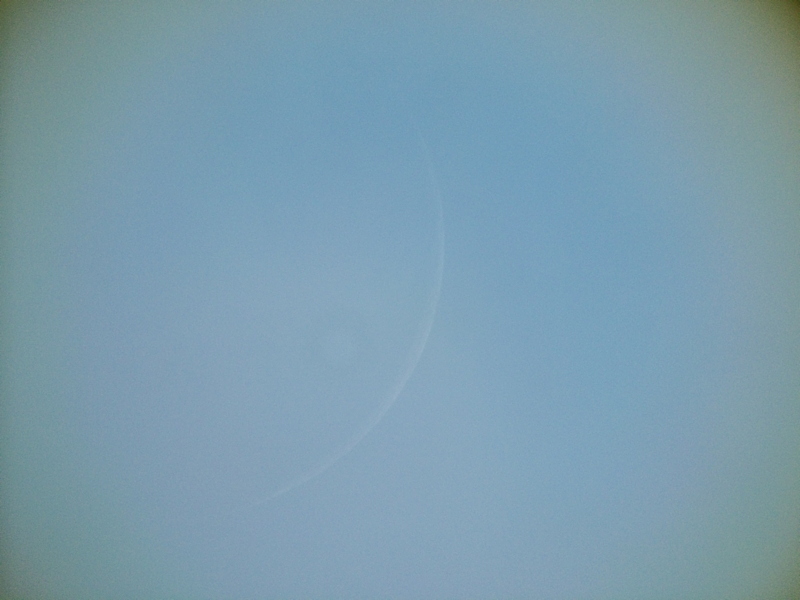
1903 MST: moon still not visible in 7x50 binoculars. 1911 MST: the moon was just becoming visible in the 8x50 finderscope. 1914 MST: moon coming visible in 7x50 binoculars, although it was very difficult to see due to its thinness and low contrast against the bright sky. 1921 MST: the moon was now easier to see in the binoculars. 1923 MST: moon now becoming naked eye visible (with difficulty). 1926 MST: took this handheld iPhone afocal 83X photo of the moon just before it went behind a tree. The cropped image is highly edited to show some details on the lunar surface.
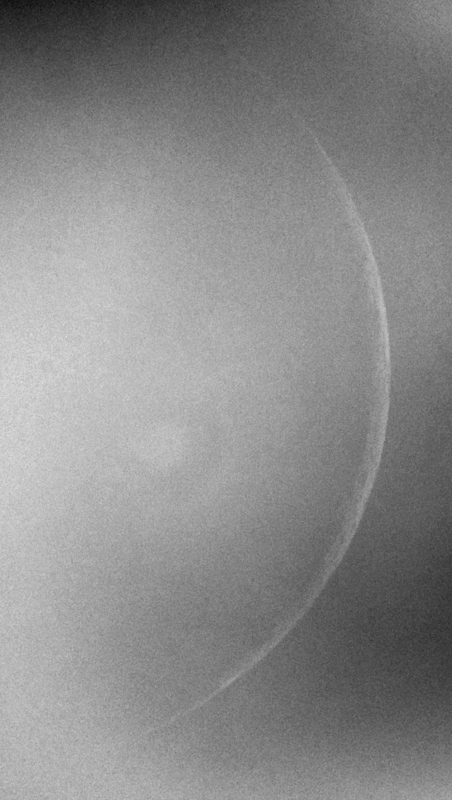
1933 MST: the moon was now easy in the 7x50 binoculars and fairly easy with the naked eye (if you knew where to look). 1937 MST: began taking photographs of the western sky with the D7000 DSLR in the hope of capturing the setting sun as well as the thin crescent moon. This photo shows the sun setting at the lower right with the moon just to the left of the tree. Can you find it? If not, mouseover (or tap) on the photo to see an insert showing the crescent moon magnified.
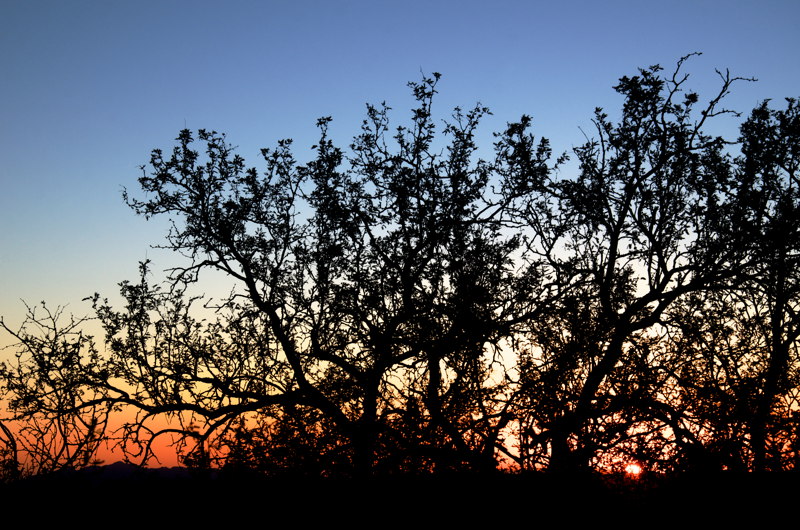
mouseover or tap
1939 MST: sunset.
1948 MST: viewed Jupiter, very low in the west and very distorted, 83X.
1954 MST: viewed Mars, 222X. Some faint surface areas were visible. There was some whiteness visible at both poles. Seeing was fairly good. Using 444X the view was pretty good. Decided to do some iPhone slo-mo (120 fps) imaging at 666X. This is a stack of 531 frames:

2009 MST: viewed Saturn, 222X. Five moons were visible: Titan, Iapetus, Dione, Rhea, and Tethys. Using 444X the view of Saturn was very good, with Cassini Division and some cloud bands clearly visible. Began doing some iPhone imaging. The first image below was taken handheld 444X at full digital zoom and downscaled to reduce pixelation. Other than the pixelation, the image is very close to what the eye saw at 444X.
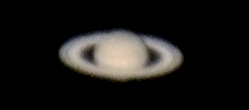
I then mounted the iPhone using my homemade afocal adapter and did some slo-mo video recordings at various lengths. This next image is a stack of 1134 frames at 666X:
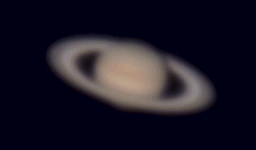
And a stack of 303 frames at 444X:

2030 MST: ending imaging and resumed Saturn observing, 222X. Seeing was little worse now. I tried to locate the faint moon Enceladus, which was quite close to the moon Tethys. 2040 MST: the moon was intermittently seen; it was a difficult object. Switched to 83X; Enceladus was still difficult, being glimpsed intermittently.
|
Closed: Saturday, 28 June 2014, 2101 MST Temperature: 82°F |
|
Lived in southern California for 27 years before moving to southern Arizona and felt many earthquakes there. Never really expected to feel an earthquake here in Oracle, but we definitely felt one Saturday night at 2159 MST. A 5.2 in eastern Arizona, near the border with New Mexico. No damage here; just a brief vibration. Will have to check telescope polar alignment on the next session.
Comments are welcome using Email. If you are on Twitter you can use the button below to tweet this report to your followers. Thanks.
Cassiopeia Observatory Home Page